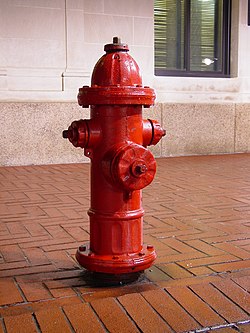Using Architectural Design to protect buildings from fire.
Fire escape.
A good architectural design should include fire escapes easily accessible and located at the farthest corner from each other.
For high rise commercial building, the fire escape stairs must be easily accessible and should terminate at the ground floor level without any ambiguity.
This is to prevent people moving from upper floors into the basement instead of ground floor to safety.
This requirement is usually enforced by the Local Authority during architectural plan approvals.
Most county approval systems don’t have fire officers to give their input during the approval process. For Nairobi City county government, the Chief fire officer ensures that the building design has included the fire escape appropriately. Older buildings done before the 90S had this enforced to the letter. these days, it’s not common to see buildings approved without fire escape stairs. The current new residential flats around Nairobi are a good example.
Registered architects will design buildings complete with fire escapes since their training enables them to.
Currently, infiltration of quacks within the building industry has resulted in sub standard buildings coming up which are not safe in case of fires.
Fire Hydrants.
These are water points provided by a Local Authority so that in case of fire, the fire brigade can easily get a source of water to quell fires within the vicinity.

Dry Riser.
These are included in the design in conjunction with the project Mechanical Engineer for Building services.
This is a pipe laid down in readiness for the Fire Brigade to connect their water pipes up into the building.
In case of fire, the fire brigade will force water up through the dry rise into sprinklers on each of the building floors.
Wet riser.
This is a series of pipes inside a building that are permanently kept filled up with water from the buildings water storage tanks.
The tanks are designed such that the exit for the building water usages is higher than for the wet riser. This way, when the water level in the tank is low, the building will lack water for use but will not lack water for firefighting use since the exit can only be through the sprinkler system.
Smoke detectors.
These are devices fixed onto the building ceiling and trigger an alarm and sprinkler system activation in case of fire.
There are 2 types
1.Ionisation
2.Optical.
Ionization .
This type uses a radioactive isotope, Americium 241. This type is more sensitive than optical.
Optical.
This uses light beam which becomes diverted by the presence of smoke hence triggering the alarm/water sprinkler.
Fire retardant balloons.
Balloons fixed in the building ceiling filled up with fire retardant air such as CO2 can also be used to quell fires. Once a fire begins, these balloons can be programmed to trigger the release of such fire retardant gasses.
Luminous Signs.
Luminous paint that glows in the dark should be used to mark the entry/exit points in case of fire. During a fire, rooms tend to be dark hence need for luminous glowing paints for signs to direct occupants to safety.
Smart Buildings.
Software that remotely communicates to the fire brigade on the sizes of fire, exact locations is also a good measure to use for fire protection.
Conclusion.
In a well designed building where the architect is working together with a Mechanical Engineer of Building services, such fire fighting technologies can be hard coded into the building construction.
Francis Gichuhi Kamau, Architect.
0271410684
info@a4architect.com


Leave a Reply